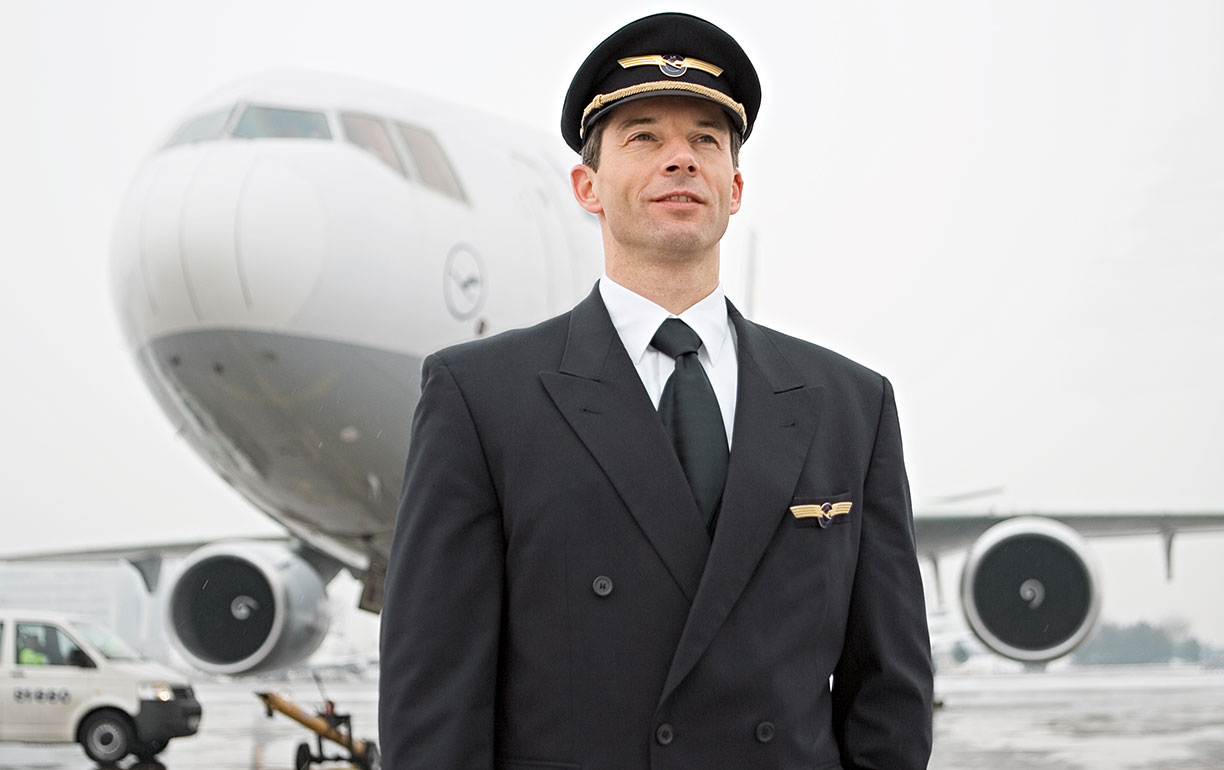
Flying intelligently.
In future, more and more shippers will be calling for complete transparency with respect to the environmental pollution caused by the transportation of their products. This is one of the reasons why Lufthansa Cargo wants to serve as a model for the industry when it comes to the issue of the environment. But what is the company doing more specifically for the environment?
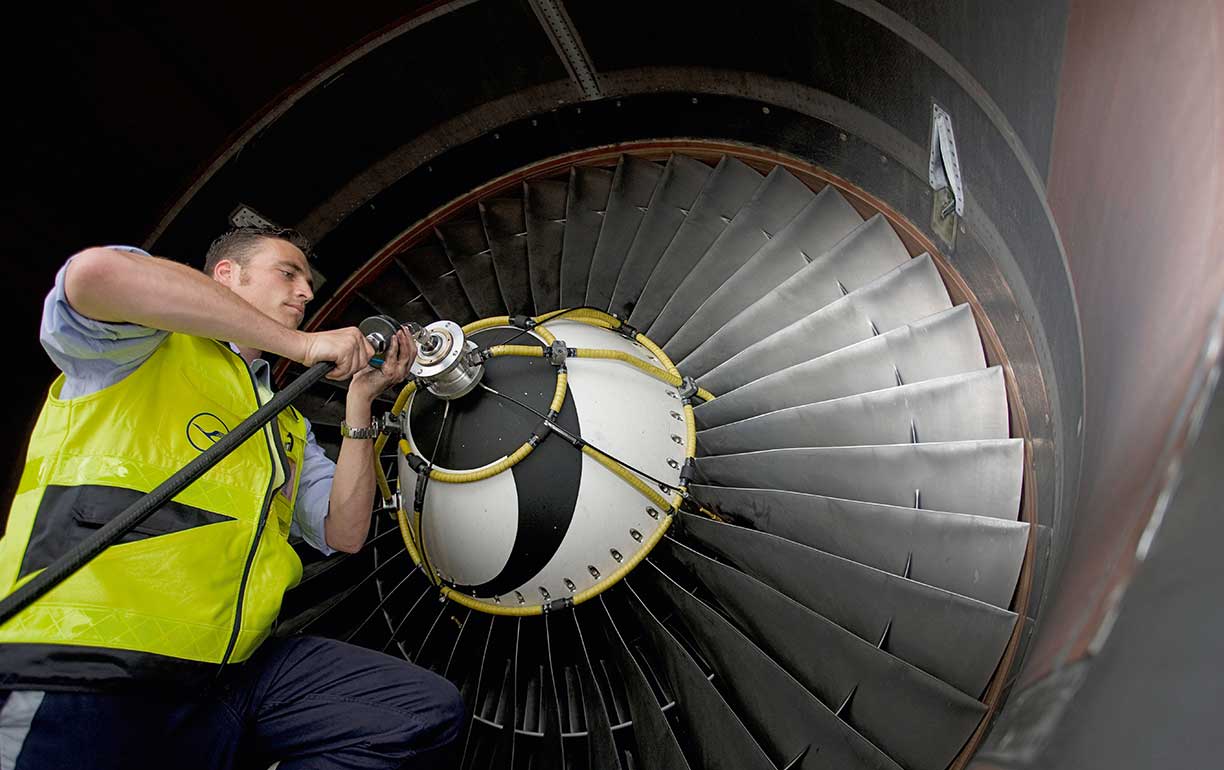
No sooner has the engine gone silent than the worker attaches the headpiece to the spinner and inserts the two nozzles. At a pressure of 100 bar, hot water with a temperature of 70 degrees Celsius is sprayed into the middle of the core engine of an MD-11 of Lufthansa Cargo and cleans away sand, salts, chemicals and other particles from the inside – simply everything that has accumulated during the last operating interval. One hour later, 110 liters of water have swooshed through the engine. The freighter is ready for operation once again. Thanks to the fact that it is simple to use, this Cyclean Engine Wash enables a more frequent cleaning of engines than up to now. The increased cleanliness lowers the average operating temperature with the result that the engines operate more efficiently and consume less kerosene. Set in relation to the engine’s entire life cycle, this can save costs of up to 115,680 euros per aircraft.
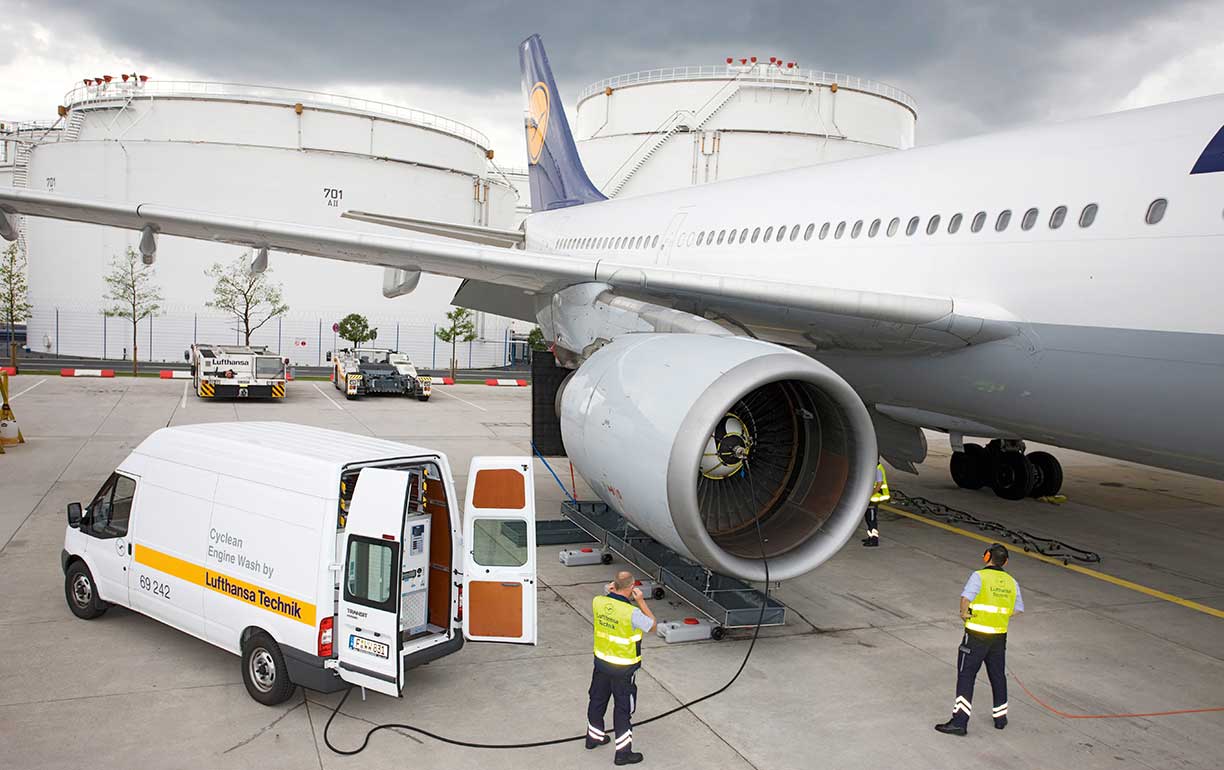
Furthermore, the carbon dioxide emission is reduced by up to 0,75 percent. Is 0.75 percent a triviality? Not at all. For the many small efforts are the ones that have made Lufthansa Cargo the frontrunner in the field of environmental protection. “We must grasp every opportunity to organize airfreight processes in as environment-friendly a way as possible,” explains Harald Zielinski, Vice President Security, Risk Prevention & Environment at Lufthansa Cargo. “Our aim is to grow, without worsening our environmental balance in doing so. This is the only way in which we can achieve our goal of also being the most environment-friendly carrier in the industry in the medium and long term.”
Resource protection has a tradition at Lufthansa Cargo, and sustainable management is one of the central corporate goals. Between 1996 and 2007 alone, the kerosene consumption fell from 244 to 167 grams per freight ton kilometer transported.
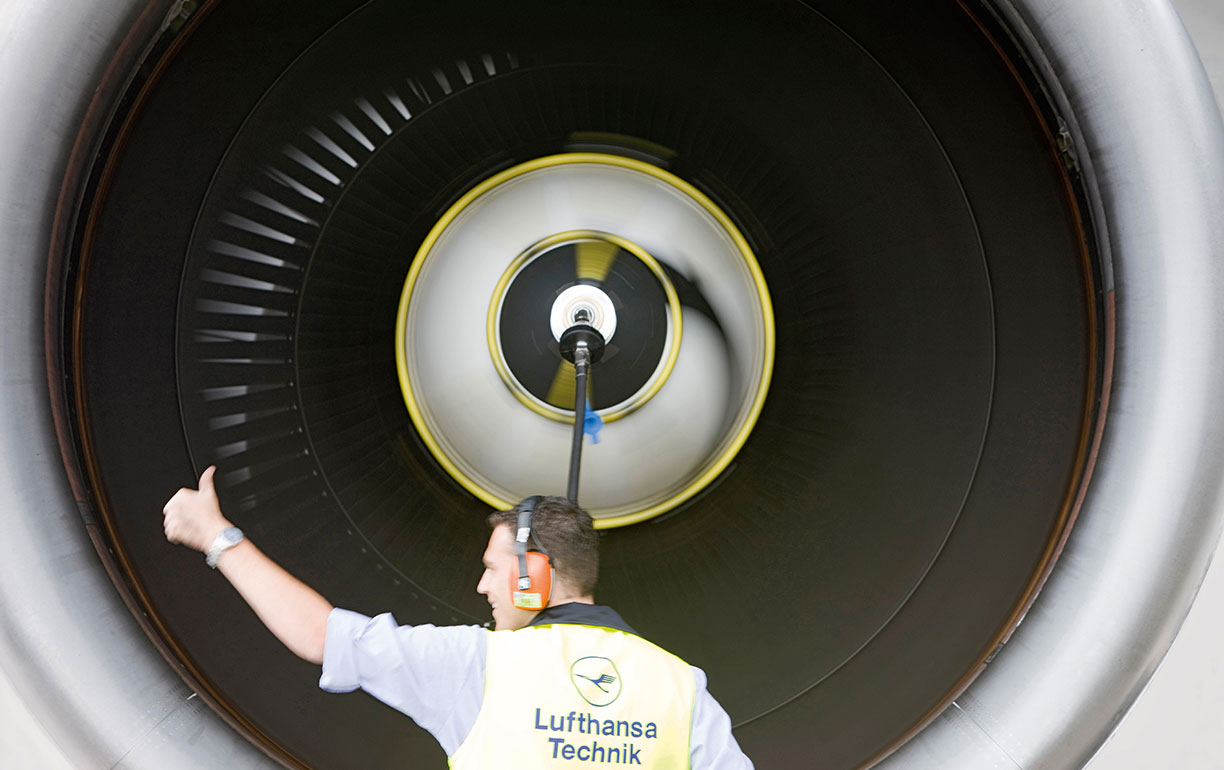
This reduced the fleet’s carbon dioxide emission by the same ratio from 781 to 527 grams per ton kilometer. Environmental pollution also decreased in the case of other pollutants: nitrogen oxides by minus 2.6 grams per ton kilometer and carbon monoxide by minus 0.2 grams – and the aircraft emit almost no more unburned hydrocarbons.
Furthermore, Lufthansa lowered the specific kerosene consumption of its passenger fleet, in which Lufthansa Cargo transports about 45 percent of its freight as belly cargo, by 30.3 percent between 1991 and 2007.
Whereas an average of twelve liters of kerosene was needed in the Seventies to transport one passenger 100 kilometers, the corresponding figure is 3.5 liters for a modern Airbus A340-300.
The modern aircraft that are in operation for or have been purchased by the Lufthansa Cargo Group are characterized by light materials, continuously improved aerodynamics and economical engines. The average age of the MD-11 fleet of Lufthansa Cargo is only ten years. The Boeing 747-400ERFs of the subsidiary Jade Cargo International are even younger. And with the Boeing 777-200LRF, AeroLogic will operate the freighter with the currently best environmental balance.
No-one at the Lufthansa Group, however, contents himself or herself with just this. Measures in the operational field can already achieve a great deal today: the buzzphrase is intelligent flying! Lufthansa Cargo always plans air transportation in such a way that fuel is already saved on the ground.
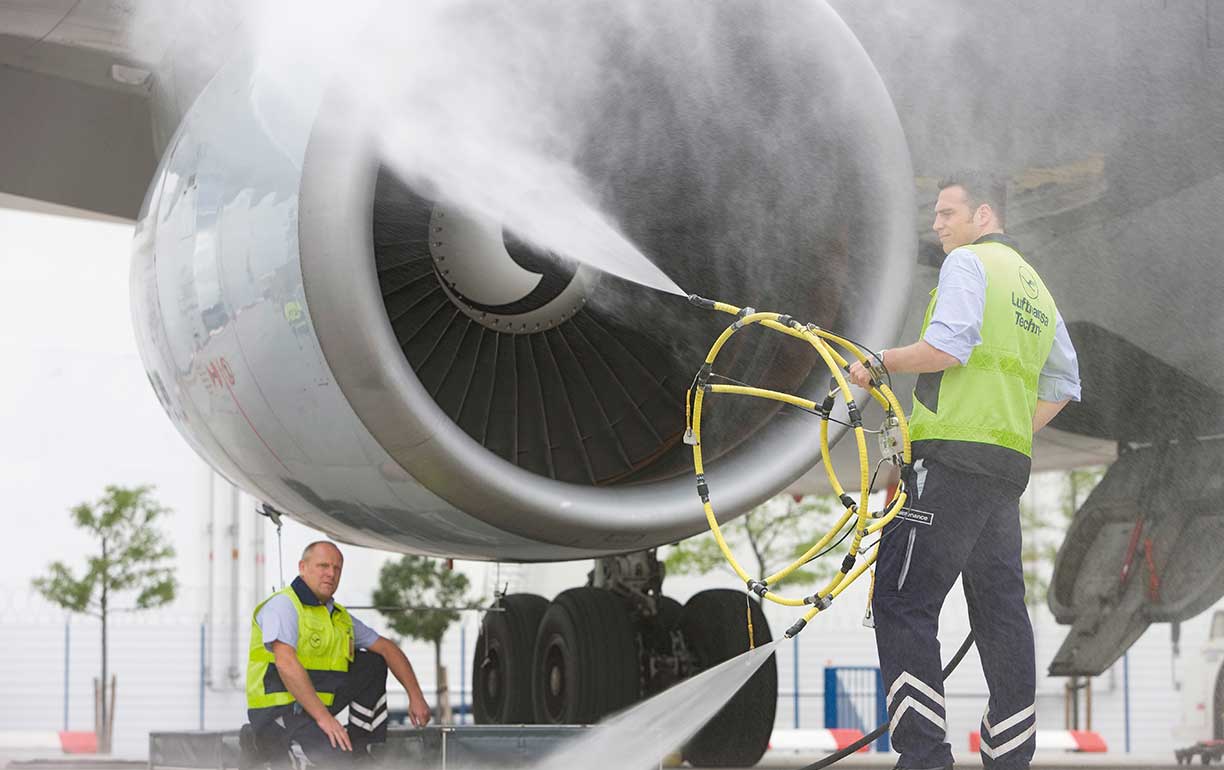
A freighter only takes the fuel along with it that it really requires. What is more, the anticipatory planning of flight paths enables the avoidance of detours and thus of higher kerosene consumption. The aircraft also operate at variable speeds in order to better utilize the winds. Even the approach flight procedure is being constantly optimized. And last but not least, Lufthansa Cargo has set itself the goal of working together with the companies of other transport carriers even more intensively, as intelligent collaboration benefits the environment most.
At Lufthansa Cargo, however, not only the flight equipment and the way in which it is used are optimized to achieve greater environmental orientation, but also all processes on the ground.
This relates to reduced water consumption, air conditioning units with lower consumption, optimized lighting, recyclable waste or freight nets and ropes, which are not thrown away but repaired.
A great success was the ISO-14001 certification of the environment management system for Lufthansa Cargo at the Frankfurt location in December last year. On site, independent experts examined whether Lufthansa Cargo takes its commitment with respect to the environment seriously. In future, even more locations and the employees there are to be sensitized to the topic of environmental protection. The Cargo Climate Care Award, which Lufthansa Cargo presented at its environment conference in February to people inside and outside of the company for their engagement for the environment, pointed the way.
Even though Lufthansa Cargo can achieve a great deal through its own activities, it has no influence on the statutory framework conditions for aviation. As from 2012, for example, the industry is to be included in emission trading. The accusation of the International Air Transport Association (IATA): in the middle of an economic crisis, the airlines would be unduly burdened – without the expectation of any effect. The aviation industry, therefore, urges European governments to initially utilize a different, more effective instrument: they should bring about the Single European Sky, which is currently still monitored by 35 air traffic controls. Through the realization of this initiative, politics can clear the way for an immediate reduction of the CO2 emission in European aviation of up to twelve percent.
Conclusion:
The protection of the environment is only possible if everyone contributes to the best of their ability. Lufthansa Cargo already began in this respect years ago and is resolutely continuing along this path. In many cases, only the supposed trivialities are what count – like an optimized engine wash.
|
A great success was the ISO-14001 certification of the environment management system for Lufthansa Cargo at the Frankfurt location in December last year. On site, independent experts examined whether Lufthansa Cargo takes its commitment with respect to the environment seriously. In future, even more locations and the employees there are to be sensitized to the topic of environmental protection. The Cargo Climate Care Award, which Lufthansa Cargo presented at its environment conference in February to people inside and outside of the company for their engagement for the environment, pointed the way. |
The aviation industry, therefore, urges European governments to initially utilize a different, more effective instrument: they should bring about the Single European Sky, which is currently still monitored by 35 air traffic controls. Through the realization of this initiative, politics can clear the way for an immediate reduction of the CO2 emission in European aviation of up to twelve percent. Conclusion: The protection of the environment is only possible if everyone contributes to the best of their ability. Lufthansa Cargo already began in this respect years ago and is resolutely continuing along this path. In many cases, only the supposed trivialities are what count – like an optimized engine wash. |
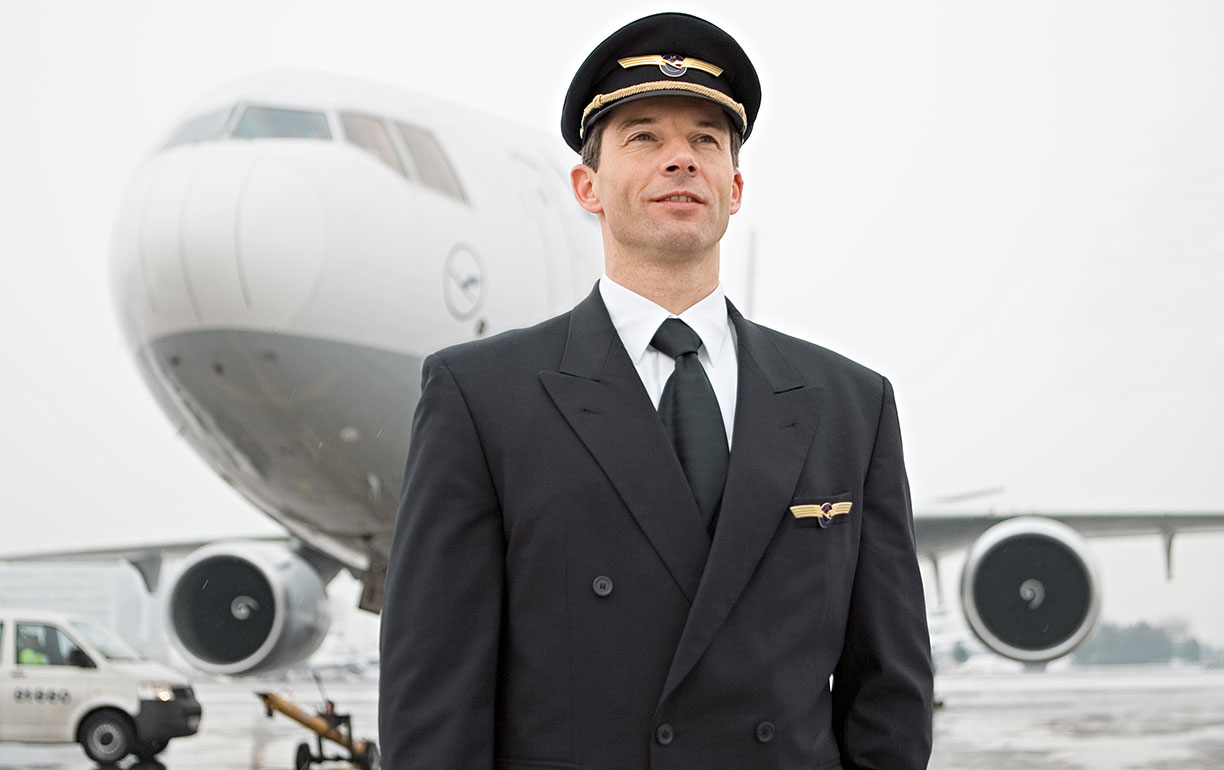
“Every gram counts.”
Captain Roland Grätsch, Head of Project Fuelsaving at Lufthansa Cargo, keeps the thirst of the fleet in check:
“We from flight operations are always working on ways of optimizing fuel consumption. This is achieved, for example, by good planning. Making sure that neither too much nor too little kerosene is carried and taking into account the wide variety of situations depending on the weather situation and the load definitely requires a bit of experience. But the effort is worthwhile, as every kilogram we save benefits the environment. Flight paths are also an important aspect. On flights to the Far East alone, we have been able to reduce the CO2 emission by three percent by switching to our hub in Astana.
If we go to Krasnoyarsk, further savings are possible. Apart from having a modern fleet the capacity utilization is also important. For a half-empty aircraft still has the worst environmental balance. Everybody at Lufthansa Cargo, therefore, can contribute to the reduction of emission.”
| “We from flight operations are always working on ways of optimizing fuel consumption. This is achieved, for example, by good planning. Making sure that neither too much nor too little kerosene is carried and taking into account the wide variety of situations depending on the weather situation and the load definitely requires a bit of experience. But the effort is worthwhile, as every kilogram we save benefits the environment. Flight paths are also an important aspect. On flights to the Far East alone, we have been able to reduce the CO2 emission by three percent by switching to our hub in Astana. | If we go to Krasnoyarsk, further savings are possible. Apart from having a modern fleet the capacity utilization is also important. For a half-empty aircraft still has the worst environmental balance. Everybody at Lufthansa Cargo, therefore, can contribute to the reduction of emission.” |
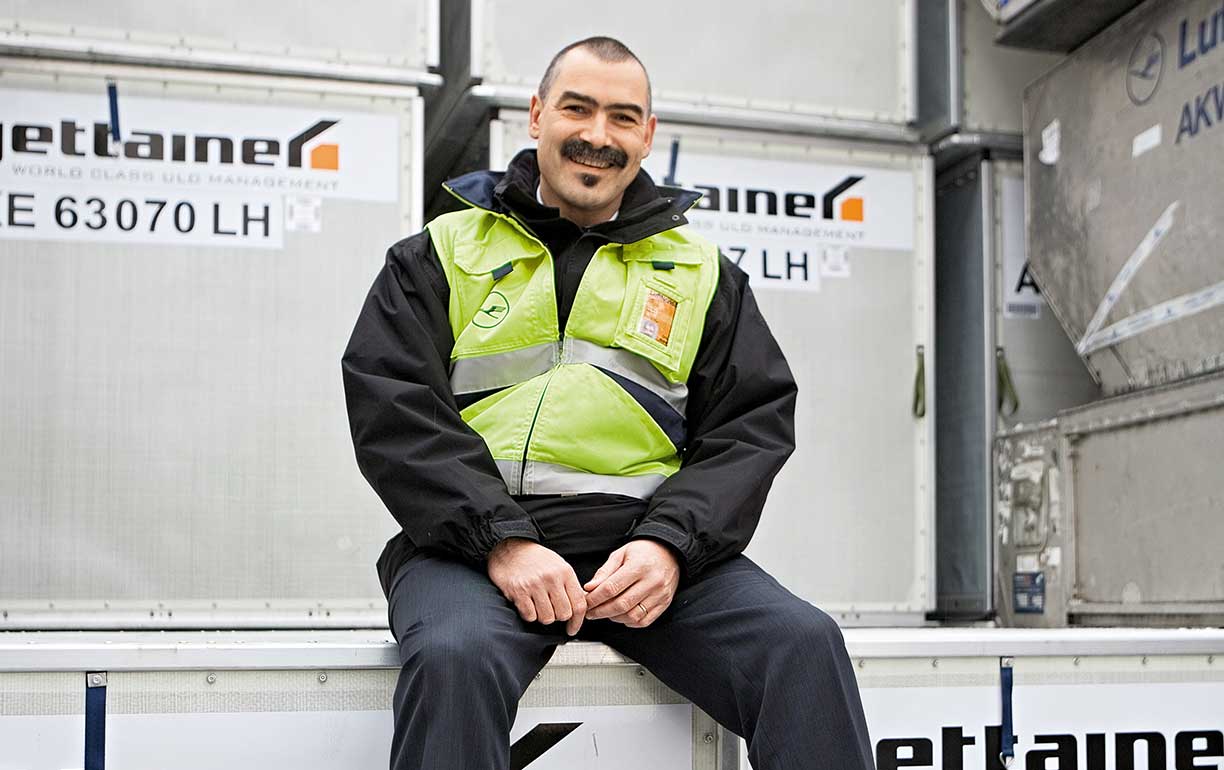
“Save 27,500 tons of kerosene.”
Jürgen Weidner, Head of Aircraft Handling Processes and Technical Services at Lufthansa Cargo, sends new kinds of containers on their way that are particularly light:
“In order to save kerosene, we have been testing since fall 2008, in collaboration with our loading device logistics partner Jettainer, whether so-called lightweight containers could replace the standard containers that are currently in common use in the cargo flight business. New kinds of composite materials with a plastic base ensure that the new containers are approximately twelve kilograms lighter than the roughly 80-kilogram ones that are currently used.
If the entire fleet of standard containers of Lufthansa Cargo and of Lufthansa Passage is replaced by the new flyweights, we shall be able to save an estimated 27,500 tons of kerosene or so over the next ten years and thus reduce the carbon dioxide emission by about 100,000 tons. By the end of the year 2009, we will be initially conducting tests with 1,000 lightweight containers. We shall then know whether the lighter containers can prove themselves in the field and whether they can also be repaired easily and cost-effectively.”
| “In order to save kerosene, we have been testing since fall 2008, in collaboration with our loading device logistics partner Jettainer, whether so-called lightweight containers could replace the standard containers that are currently in common use in the cargo flight business. New kinds of composite materials with a plastic base ensure that the new containers are approximately twelve kilograms lighter than the roughly 80-kilogram ones that are currently used. |
If the entire fleet of standard containers of Lufthansa Cargo and of Lufthansa Passage is replaced by the new flyweights, we shall be able to save an estimated 27,500 tons of kerosene or so over the next ten years and thus reduce the carbon dioxide emission by about 100,000 tons. By the end of the year 2009, we will be initially conducting tests with 1,000 lightweight containers. We shall then know whether the lighter containers can prove themselves in the field and whether they can also be repaired easily and cost-effectively.” |
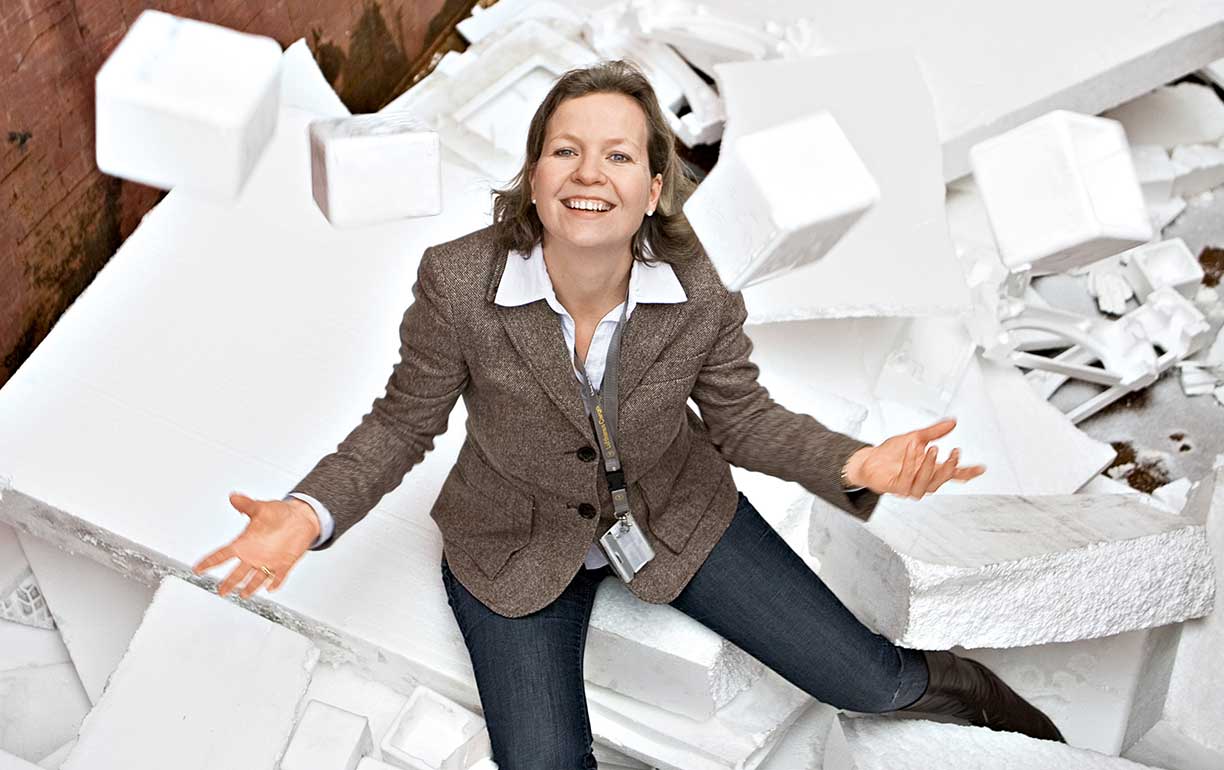
“25 percent less CO2.”
Bettina Mörth, Environment Manager at Lufthansa Cargo, successfully took her company to ISO-14001 level – but she is not settling for just this:
“A growing number of shippers are compiling an environmental balance and thus want to know how much CO2 is caused by the transportation of their goods. Forwarders that collaborate with Lufthansa Cargo know that the company attaches great importance to environmental orientation. Our ISO-14001 certified environment management system, which I introduced last year at the Frankfurt location with the broad support of a wide variety of specialist divisions, stands for this.
As do our environment guidelines that were laid down by the executive board, which ensure that we seek continuous self-improvement in this field worldwide. The goal is clear: we aim to sustainably position ourselves as industry leader in the environmental activities and to reduce our CO2 emission by 25 percent by 2020. Anyone who has queries or suggestions on this point can get contact me any time.”
Photos:
Moritz Schmid
planet 1/2009
| “A growing number of shippers are compiling an environmental balance and thus want to know how much CO2 is caused by the transportation of their goods. Forwarders that collaborate with Lufthansa Cargo know that the company attaches great importance to environmental orientation. Our ISO-14001 certified environment management system, which I introduced last year at the Frankfurt location with the broad support of a wide variety of specialist divisions, stands for this. | As do our environment guidelines that were laid down by the executive board, which ensure that we seek continuous self-improvement in this field worldwide. The goal is clear: we aim to sustainably position ourselves as industry leader in the environmental activities and to reduce our CO2 emission by 25 percent by 2020. Anyone who has queries or suggestions on this point can get contact me any time.” |
Photos:
Moritz Schmid
planet 1/2009
